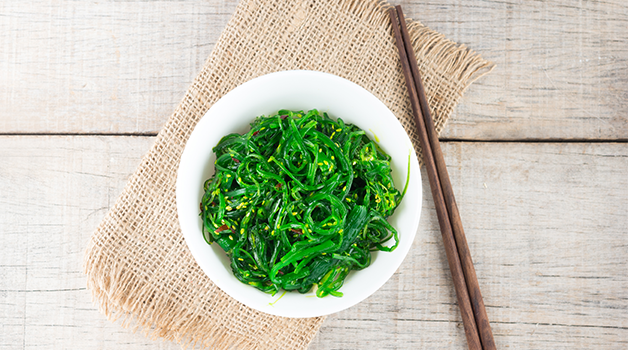The COVID-19 pandemic and the risks from climate change are having a significant and ongoing impact on food consumption behaviour in many countries. People are taking a more proactive approach to health and are turning to new way of feed so-called ‘responsible’ (consumption of goods that meet the criteria of sustainable development) [1]. However, this should not be at the expense of pleasure!
Algae meet the expectations of consumers, who, concerned about their diet, choose foods with nutritional value, produced in a sustainable manner and are curious about innovations [2].
Is eating algae good for your health?
Algae are known to be healthy and tasty, and not for nothing!
Algae have been consumed for centuries and are used for nutrition and treatment. For several decades now, many naturopathic movements have been highlighting their benefits. In countries where the consumption of algae and sea products is common (in Asia in particular), the rate of obesity is very low, the incidence of cancers and cardiovascular diseases is much lower than in Western countries, and people seem to live longer.
This is due to the high concentration of bioavailable vitamins and minerals in seaweed (as they are present as chelates). It also contains a large amount of soluble and insoluble fibre, which respectively slows down the rate of carbohydrate absorption (an advantage for diabetics) and aids digestion. Finally, algae are full of a multitude of nutrients and secondary metabolites with various health benefits: sterols and phenols have proven antioxidant properties, essential fatty acids (omega 3) prevent the risk of cardiovascular disease, sulphated polysaccharides may have an anti-cancer effect, etc [3].
Algae and sustainable development
Awareness of the urgency of respecting the environment requires us to rethink our daily lives, particularly with regard to food. Responsible” consumers prefer local, minimally processed products from sustainable sources (e.g. organic farming).
The consumption of edible algae is an interesting way of meeting the criteria of sustainable development, as they are produced and processed in a way that is :
- Ecological: growing in the ocean, algae do not require fertilizers or pesticides. They fight global warming by not generating any greenhouse gases and by storing carbon dioxide over the long term.
- Renewable: algae simply need sea water, sunlight and carbon dioxide to grow. They do not put pressure on drinking water supplies or arable land.
- Ethical: the use of algae has a positive environmental impact, but also a social impact as it contributes to healthy food and the development of the local economy [4].
Eating algae is a source of pleasure
While the Japanese consume between 7 and 9 kg of fresh algae per year (Centre d’Etude et de Valorisation des Algues), the consumption of algae as a vegetable is not yet popular in the West. However, there is a real craze for this original, tasty and practical food.
Indeed, algae arouse the curiosity of consumers who are constantly on the lookout for culinary discoveries, all the more so when these allow them to open up to new cultures. This open-mindedness is due to the multiplication of Asian restaurants and the success of public events. Great chefs, for example, cook them for their unique textures, colours and flavours. Dried algae are also appreciated for their practicality: they rehydrate quickly and can be incorporated into many dishes as a seasoning because their iodine taste goes very well with seafood [5]. Cooking with algae is guaranteed to be fun!
BIBLIOGRAPHY :
[1] Charline Comparini, Marie Lesueur, Morgane Marchand. Les algues comme aliments éthiques Projet Idealg. 2017, 4 p. ffhal-01823949f consulté le 30/08/21 : https://hal-agrocampus-ouest.archives-ouvertes.fr/hal-01823949/document
[2] MARFAING H. La place des algues dans l’industrie agroalimentaire aujourd’hui – CEVA – 30/10/2019.
[3] MOURITSEN O. G. 2015. Algues marines – Propriétés, usages, recettes. Paris, Éditions Delachaux et Niestlé, 304 pages.
[4] QUEVA, Régine. 2019. Les supers pouvoirs des algues. Larousse. 144 pages.
[5] LE BRAS Quentin, RITTER Léa, FASQUEL Dimitri, LESUEUR Marie, LUCAS Sterenn, GOUIN Stéphane. 2014. Etude de la consommation des algues alimentaires en France. Programme IDEALG Phase 1. Etude nationale. Les publications du Pôle halieutique AGROCAMPUS OUEST n°35, 72 p. consulté le 30/08/21 : https://halieutique.agrocampus-ouest.fr/files/fichiers/pdf/4618.pdf
